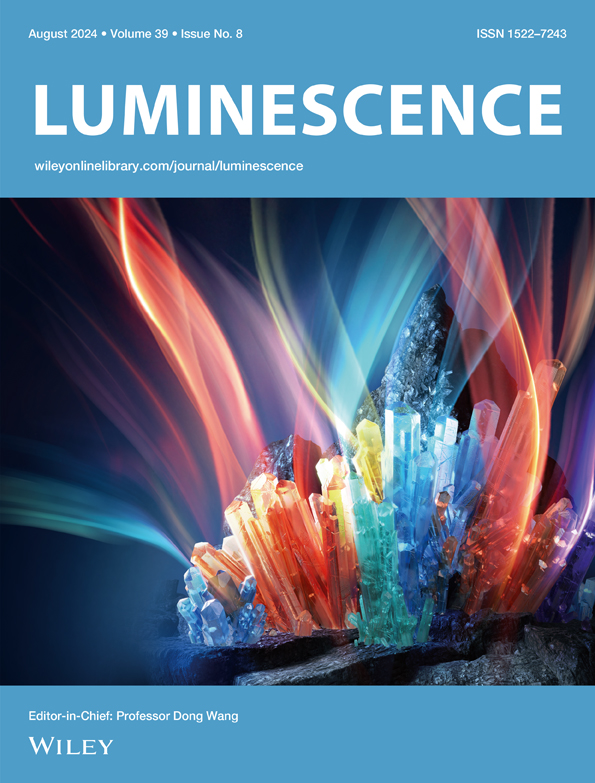Investigating the Function of Ribonucleic Acid in Suppressing the Spectral and In Vitro Cytotoxic Effects of Methylene Blue/Thionine Dyes
Abstract
Small-molecule targeting of ribonucleic acid (RNA) is a new and promising therapeutic approach, but it requires the discovery of small compounds that can specifically target particular RNA structures. In this context, a comprehensive description of the photophysical interaction features of phenothiazinium dyes such as thionine (TH)/methylene blue (MB) with transfer ribonucleic acid (tRNA) is examined by spectrophotometric titration and molecular docking analysis. After binding with tRNA, TH/MB dyes displayed emission, and absorption characteristics were significantly changed. The observed tRNA-induced spectral alterations are attributed to energy transfer from guanine base pairs, likely resulting from an intercalative interaction mode proposed for tRNA. The negative free energy change value (ΔG = ~ − 27.5 kJ mol−1) of the TH/MB dye–tRNA systems suggests that the present binding interaction is highly favorable and spontaneous. The conformational alterations of the tRNA with both dyes were verified using circular dichroism analyses. Molecular docking test results indicated that TH/MB dye molecules bonded to the tRNA cavity in a specific pattern. The novelty of this study resides in a unique role for TH/MB dyes in tRNA dysfunction, expanding our understanding of how TH/MB dyes and their tRNA complexes were used in in vitro cytotoxic investigations of human lung cancer cells.

 求助内容:
求助内容: 应助结果提醒方式:
应助结果提醒方式:


